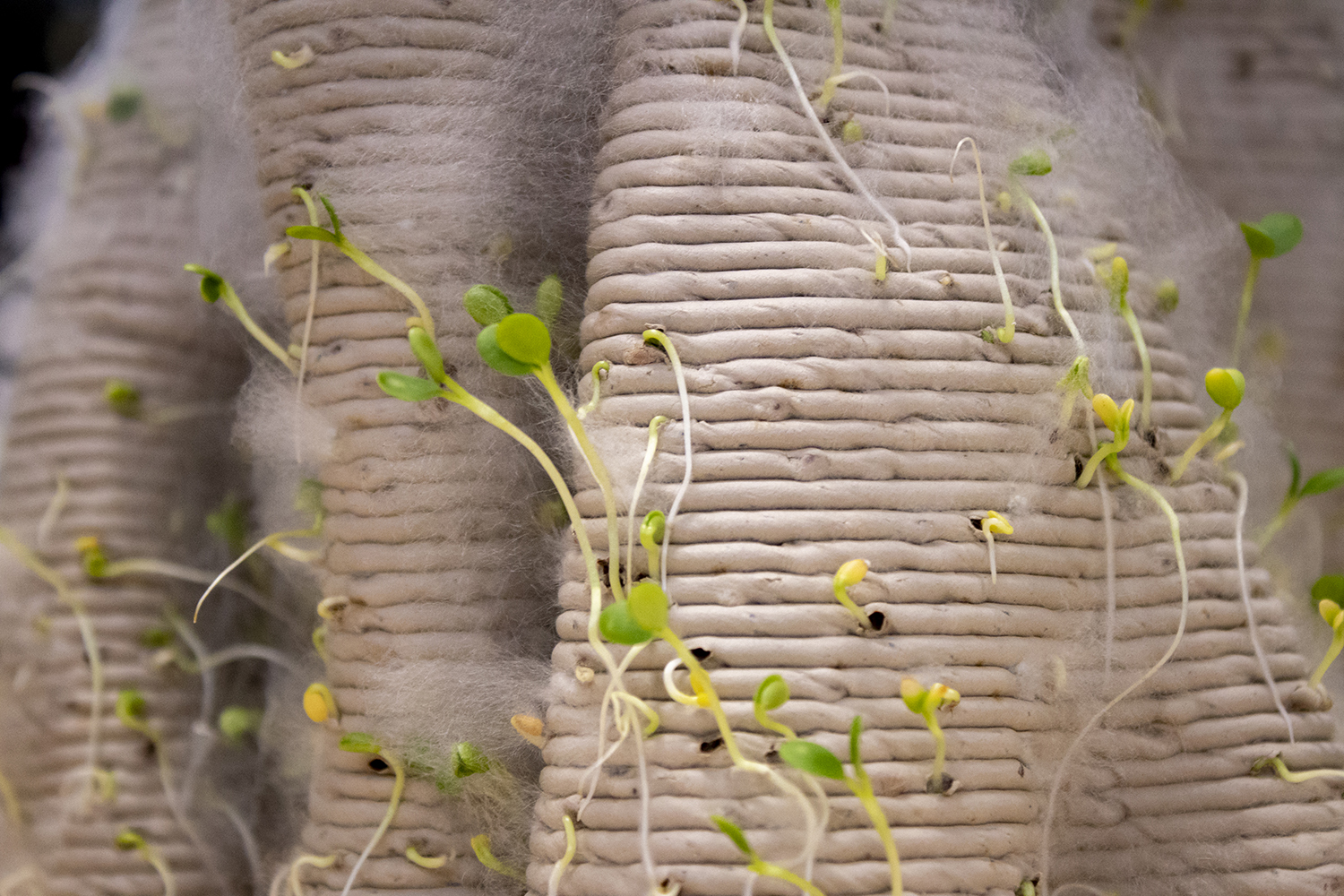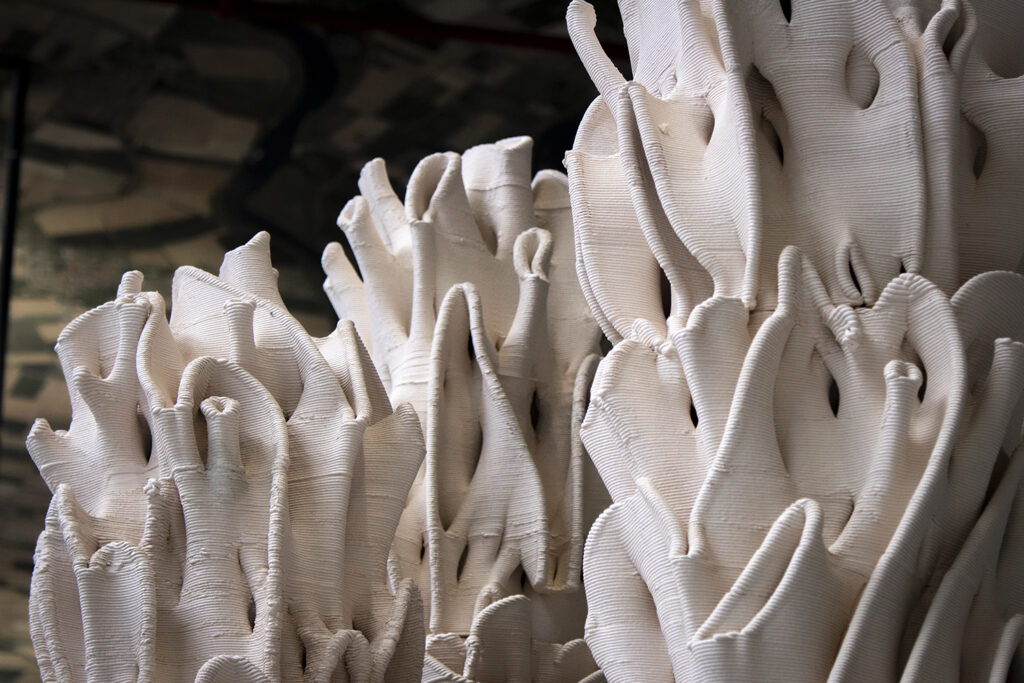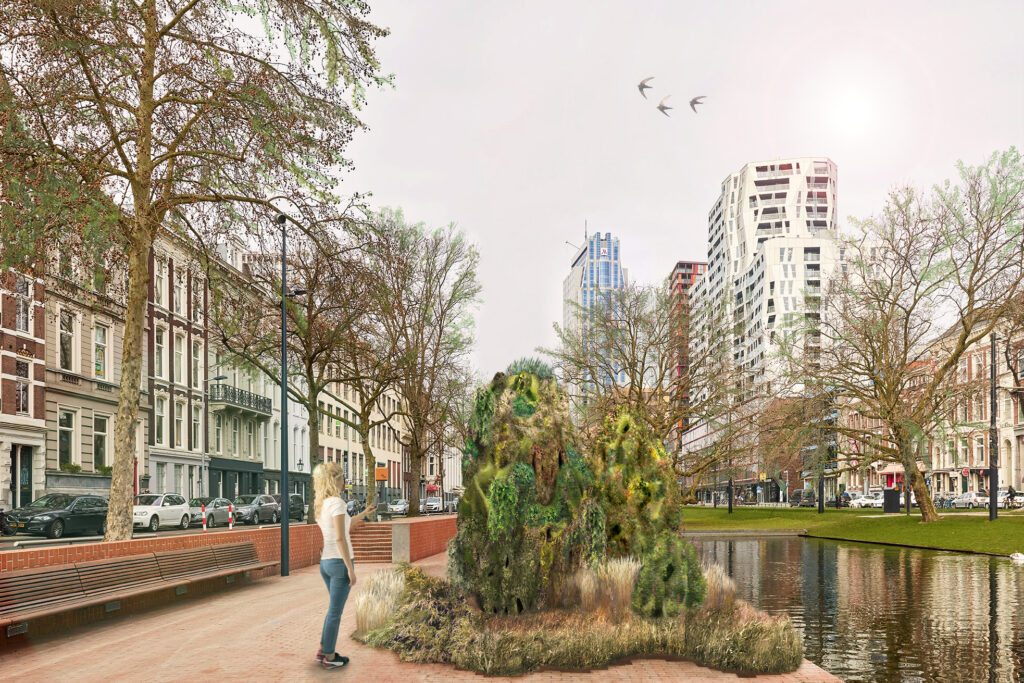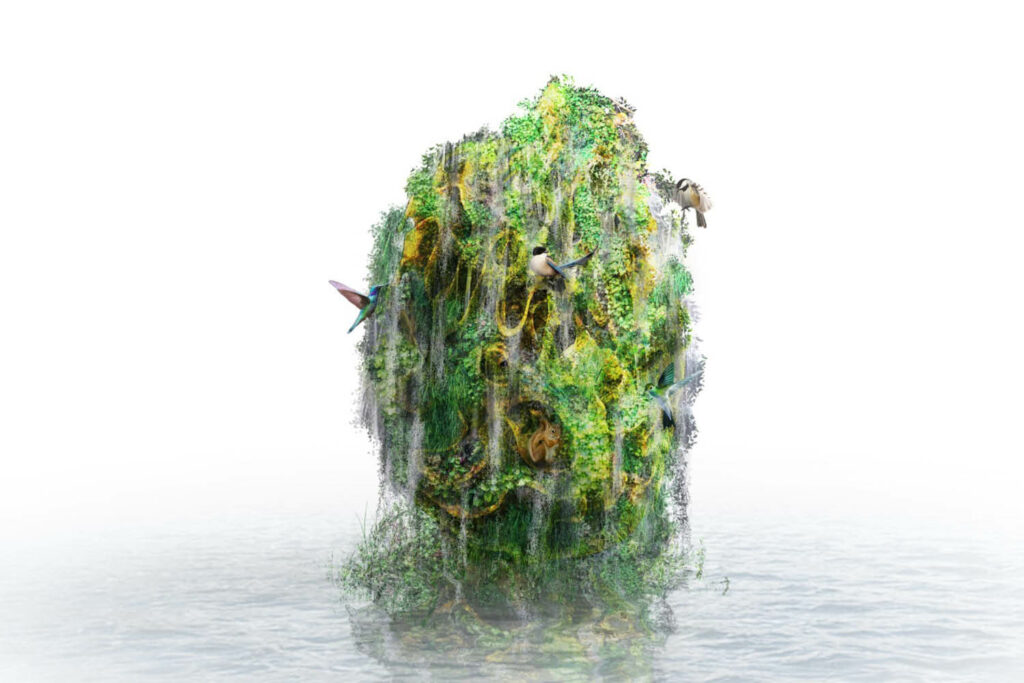
Urban Reef views the city as a living landscape, a reef. Bio-inclusive cities offer habitats not only to humans but to all kinds of life. But non-human interests are often forgotten. Porous spaces and microclimates improve city ecology. These algorithm generated, 3D printed ‘reefs’ absorb water and heat.

Urban Reef is an adventurous startup that researches, develops and designs for the bio-inclusive city.
Bio-inclusive: Including all life in design
The city is a shelter for all life, not just humans. Urban Reef questions the human relationship with nature: it is not to control, deny or fix the environment, but rather to stimulate its diversity and dynamics. By designing with microclimatic refuges Urban Reef contributes to habitats for spontaneous growth. To live together with multiple species on planet Earth we (humans) need to give more space to wilderness in cities: both physically and in our collective thought.
The city ís a living reef
Urban Reef sees the city as a living landscape, a reef. Through research, design, technology and theory they develop samples of the bio-inclusive city. The wilderness-stimulating prototypes are called Reefs. Reefs are labyrinths of shelters generated by algorithms inspired by natural growth and are 3D printed with (living) materials. With capillary abilities Reefs can absorb (rain)water, reduce urban heat effect and provide a diversity of micro-climates and nutrients, thus creating more opportunities for organisms to live in the city while contributing to climate adaptation. Humans can connect with the reefs both through senses and integrated sensors.
Research about material, form and life
Different labs research the development of Reefs: the Living Material Lab, the Natural Growth Lab and the Design & Interaction Lab. The Living Material Lab consists of experiments with (natural) materials to use for 3D printing. To develop a material that is porous, sustainable and bio-receptive, Urban Reef conducts numerous experiments with bio-materials. It takes time, effort and an open mind towards failure to experiment with recipes and a variety of ingredients. In the lab, coffee, mycelium, seeds, paper and dredge are mixed to experiment with all kinds of strengths, thicknesses and structures. The Natural Growth lab deepens in on the way materials, shapes and physical conditions play a role for communities of organisms to thrive. The Design & Interaction lab seeks out to ideate, visualise and prototype the reefs for growing the bio-inclusive city. It includes philosophical theory, computational design and prototyping with 3D printing techniques.

Prototypes in development
At this moment, two concepts are under development. Zoo Reef is primarily intended to enhance fountains in urban areas. The prototype has 3D-printed structures that form a labyrinth of cavities. By differentiating in porosity, size of spaces and orientation in relation to sun, wind and rain, different microclimates are created for biotopes in the city. The growing life in the Zoo Reef can be followed via sensors and an app. Further research is being done to develop an interactive interface, inspired by the Tamagotchi, to make the data more accessible.
Rain Reef is a 3D printed, rain collector that disconnects a downspout from the sewer and consists of a capillary material. The complex geometry ensures that as much water as possible is absorbed into the porous material and that the variety of micro-climates increases the potential growing surface for vegetation. The rainwater stimulates biodiversity and creates a buffer. To optimize this, the rain collector anticipates the weather forecast via built-in sensors.

Experimental gardens
Urban Reef is working on test sites, experimental gardens where the reefs are implemented and iterated on the spot. The advantage of this is that various parties can remain involved in the development process and the innovation can be followed. This is hands-on experience that helps to improve the prototypes. The gardens aid in:
– developing and implementing the reefs on various spots in the city;
– measuring micro-climates using permanent sensors and tests;
– observing the organisms that dwell in and around the reefs;
– gaining insight how different cavities help create new habitats by protection from the wind, sun, rain and other organisms;
– measuring how the thermic capacity, porosity and capillarity of the material contribute to biodiversity and climate adaptation.
In 5 years
In 5 years, Urban Reef reflects on how the experiments have worked, which helps to define materials, techniques and shapes, after which we apply them on a large scale.
A green, dynamic environment has positive consequences for the quality of life of the city, as this forms an attractive living environment. The city can also retain more water during heavy rainfall and the heat island effect can be counteracted.
Within the city there are many opportunities to apply the developed design strategies to other functions in the urban environment. Urban Reef can lay the foundation for a new type of architecture.